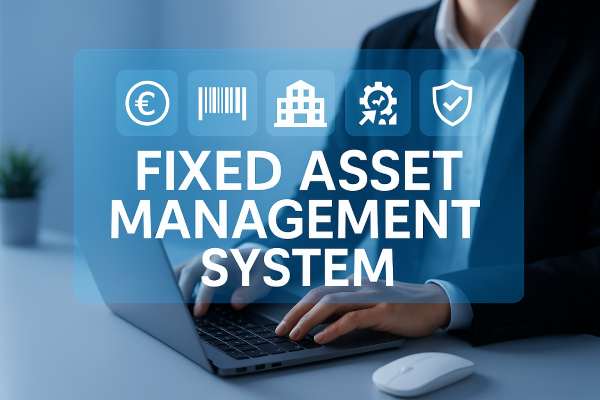Spreadsheets and manual tracking cost you thousands in lost, stolen, or underutilized assets every year. FALCON ERP's Fixed Asset Management gives you real-time visibility, automated depreciation, and complete lifecycle control.

These aren't just inconveniences. They're profit killers that compound over time.
No real-time tracking means equipment disappears. Average company loses 5-8% of assets annually to theft, loss, or misplacement.
Manual depreciation leads to tax errors, incorrect financial statements, and compliance issues. Penalties averaging AED 25,000+ per audit.
Equipment breaks down unexpectedly. No preventive schedule means costly emergency repairs and extended downtime.
Physical asset audits take days or weeks. Staff manually checking barcodes, reconciling spreadsheets, hunting for discrepancies.
Can't see which assets are idle or underused. Buying duplicates while existing equipment sits unused in another location.
Missing insurance renewals, warranty expirations, and maintenance records. No audit trail for regulatory compliance.
From acquisition to disposal, track and manage every asset with complete visibility and automated workflows.
Track every asset with barcode/QR code integration, location monitoring, and instant status updates across all locations.
Automatic depreciation calculations with multiple methods, compliant with UAE accounting standards and tax regulations.
Schedule and track maintenance activities with automated reminders, work order management, and complete maintenance history.
Real-time dashboards showing asset utilization, depreciation trends, maintenance costs, and strategic insights for better decision-making.
Real metrics from companies using FALCON Fixed Asset Management
No complex setup. No months of disruption. Just a clear path to complete asset control.
We help you catalog your existing assets, print barcode labels, and set up depreciation schedules. Your asset register ready in days.
Train your team on barcode scanning, asset tracking, and maintenance scheduling. Everyone up to speed in just 2-3 training sessions.
Start tracking assets in real-time with instant visibility. Run your first audit and see the time savings immediately.
Track assets across unlimited locations, departments, and cost centers with real-time visibility.
Never miss a renewal or warranty expiration with automated alerts and comprehensive tracking.
"Asset audits used to take our team 3 weeks. With barcode scanning, we completed the last audit in 2 days. Found 47 assets we thought were missing - they were just in different locations."
— Operations Director
"Equipment was constantly 'lost' between project sites. The mobile app lets site managers scan and transfer equipment instantly. Equipment utilization up 60%."
— CFO
Most companies complete their initial asset catalog within 1-2 weeks. We provide barcode labels and mobile apps to speed up the process. Our team guides you through every step.
No. Our mobile app works on any iOS or Android device with a camera. You can also use dedicated barcode scanners if preferred. We support all major barcode formats.
Yes. Straight-line, reducing balance, sum-of-years-digits, and custom methods. Separate book and tax depreciation schedules. Fully compliant with UAE accounting standards.
FALCON ERP Enterprise Fixed Assets integrates seamlessly with FALCON Financial Management and most popular accounting systems. Depreciation entries post automatically to your general ledger.
Stop losing assets to poor tracking and manual errors. Book your personalized demo and see how FALCON Fixed Asset Management can transform your asset operations in weeks, not months.